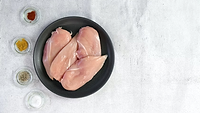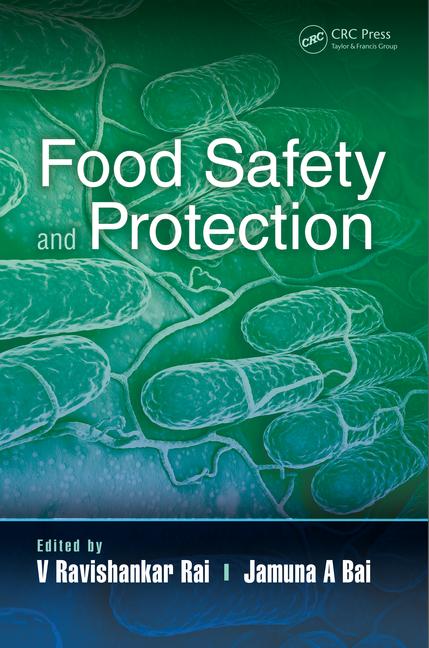Self-Contained Rapid Salmonella and Listeria Test Kits: Protect Against Chances of Cross-Contamination in Your Plant

Listeria and Salmonella are two foodborne pathogens that are of significant concern. According to the Centers for Disease Control and Prevention (CDC), nontyphoidal Salmonella ranks as number two in most illnesses (behind Norovirus) and as number one in illnesses requiring hospitalization as well as illnesses resulting in death. Listeria monocytogenes ranks as number three in illnesses resulting in death.
Most food processing facilities have protocols for sampling environmental surfaces to ensure that they are free of these pathogens. Many facilities then send the samples out to a commercial laboratory for testing. A primary reason that food laboratories don’t perform the testing in their own laboratories is apprehension of potentially enriching and cultivating these dangerous bacteria within their facility and the fear of unintended contamination when utilizing methodology, such as petri dishes and films that are not tightly sealed. An alternative method, using PDX media available from Weber Scientific, addresses this concern because the entire enrichment takes place in a tightly sealed device.
Both a Salmonella-indicator broth (PDX-SIB) and a Listeria-indicator broth (PDX-LIB) are intended to be used in the food processing environment and on food contact surfaces, and give rapid results, 24 hours and 30 hours, respectively. They are AOAC-RI Performance TestedSM for use as a presumptive positive or a confirmed negative. AOAC studies were conducted at 4 inch × 4 inch surface areas.
PDX-SIB was subjected to a panel of more than 100 Salmonella and non-Salmonella organisms. The test exhibited 99% sensitivity. The tests were conducted with inocula at both low [<10 colony-forming units (CFU) per sample] as well as high (>100 CFU per sample) levels.
The applicability of PDX-LIB is limited for selected common Listeria spp. (L. monocytogenes, L. innocua, L. ivanovii and L.welshmeri) on selected common surface types (sealed concrete, ceramic tile, stainless steel and plastic). The test detects as low as 1–10 CFU/mL. Results are comparable to U.S. Department of Agriculture (USDA) methods (2 percent false negatives and 1 percent false positives in real environmental samples).
Positive viable Salmonella spp. will exhibit a color change from blue to yellow if Salmonella bacteria are growing. The liquid medium contains selective agents to prevent the growth of competitive microflora while providing nutrients for the growth of resistant Salmonella. Salmonella are further differentiated from any active background microflora by metabolism of a specific energy source metabolized primarily by Salmonella. As the population of Salmonella metabolizes the growth substrate, the compound is fermented to an acidic byproduct, which turns the pH indicator in the broth from blue to yellow. A yellow color observable after incubation at 37 ± 1 °C for 24–48 hours is deemed presumptively positive. Any sample that is not presumptively positive at 24 hours must be incubated for a total of 48 hours to ensure the sample is a true negative.
Listeria media contain a patented formula of antibiotics, growth enhancers and color-changing compounds. The antibiotics function synergistically to inhibit most non-Listeria microorganisms. Growth enhancers provide recovery nutrients to support the growth of sublethally injured Listeria. Indicator compounds will turn the broth from yellow to black by utilizing the β-glucosidase enzyme produced by Listeria spp. A brown to black color 30–48 hours at 37 °C indicates a presumptive positive test for Listeria spp. Positive results can be read as early as 30 hours. Results cannot be considered negative until samples have been incubated for 48 hours.
Each bottle of media is available with the new EnviroMax Plus® foam tip swab system from Puritan Medical. The EnviroMax swab is sterile, pre-moistened and has a leak-proof cap for complete containment. The entire procedure involves four steps: 1) Remove sponge swab from container and swab a 4 inch × 4 inch surface area; 2) Return sponge swab to same container and aseptically add one pre-measured 20 mL bottle of media; 3) Incubate at 37 °C for 24 or 30 hours; 4) Read results. If a sample is positive, the sealed swab device can then be sent to an outside laboratory for confirmation, if desired, utilizing a U.S. Food and Drug Administration Bacteriological Analytical Manual or USDA procedure, such as XLD agar for Salmonella or Modified Oxford media for Listeria.
weberscientific.com
Looking for a reprint of this article?
From high-res PDFs to custom plaques, order your copy today!








